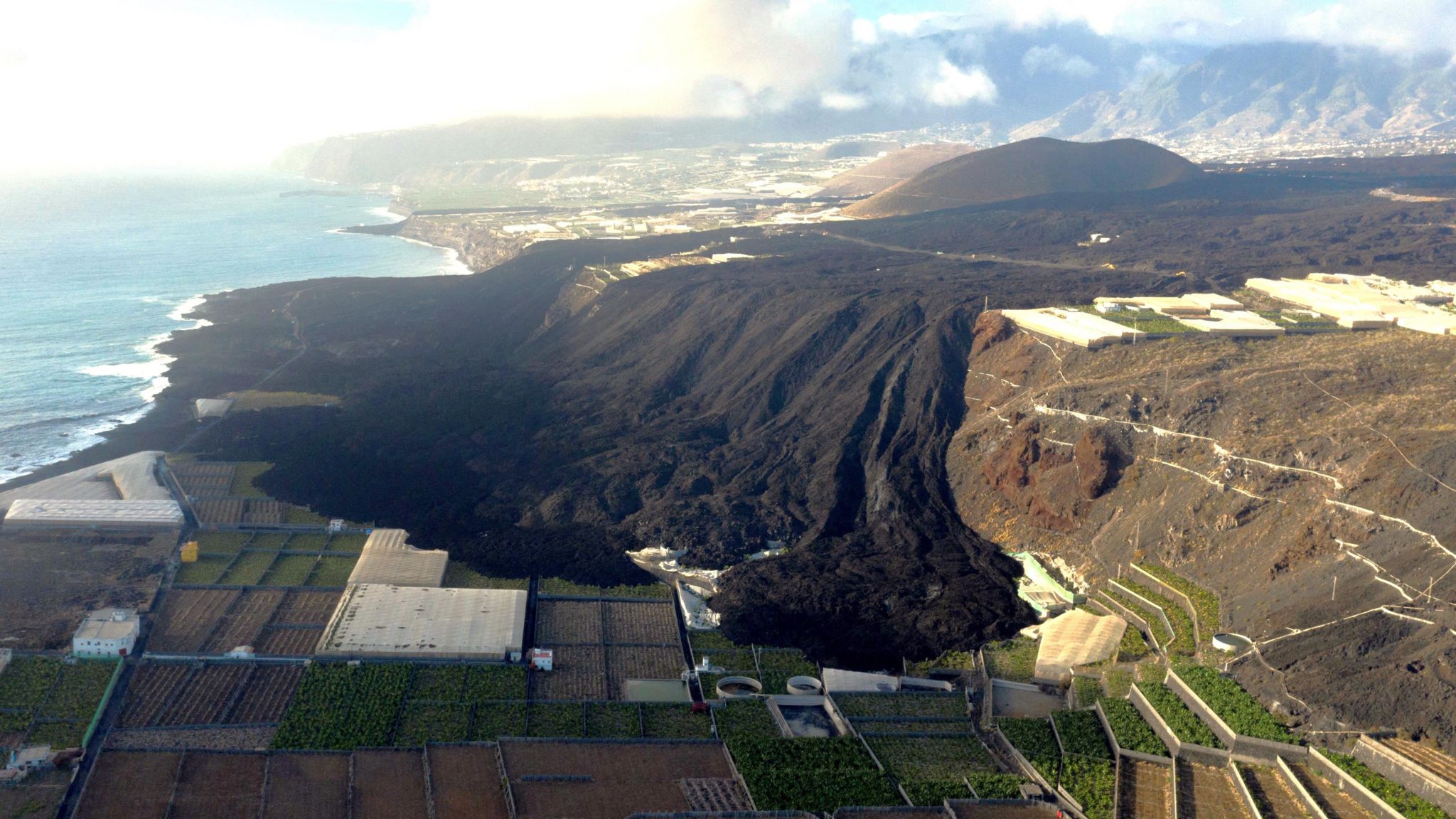Running on a volcano’s rim – the race in the shadow of an eruption
In 2021, La Palma’s volcanos erupted, issuing tonnes of molten rock and a reminder of the perilious nature of the island’s premier running race.

Its name alone captures trail-running’s spirit of adventure. And it fits perfectly.
Transvulcania is one of the world’s toughest and most spectacular ultra-marathons, skirting along a volcanic ridgeline in the Canary Islands.
It takes place on the island of La Palma, known as La Isla Bonita for its wealth of natural beauty.
Yet in 2021 there was a devastating reminder that Mother Nature possesses beastly power as well.
For the first time in 50 years, that volcanic ridge erupted.

There had been warnings. A cluster of small earthquakes started under the Cumbre Vieja ridge on 11 September.
Then on 19 September, the eruption began a little west of the ridgeline. The first lava flows snaked down slopes.
Homes were evacuated, livestock moved across the island and farmers raced to guard or salvage their crops.
There was little they could do. Houses were swamped, roads barricaded and fields buried by molten flows and layers of ash.
Ten days after the eruption had started, the lava flow completed its 6km (3.7 mile) journey across La Palma, falling, steaming, into the Atlantic Ocean.
La Palma’s previous eruption in 1971, from the south of the same ridge, went on for a month. The 2021 eruption lasted for 85 days.
Having had to cancel the 2020 race because of the coronavirus pandemic, Transvulcania’s organisers were left with no choice but to scratch the 2021 event.
In that moment, it was the least of the island’s worries.
Ultimately more than 7,000 people had to be evacuated and more than 3,000 properties were destroyed, along with farmland covering roughly 1,500 football pitches.
The financial damage was estimated as 862.7m euros (£729m).
Now, though, Transvulcania has returned to help La Palma recover, along with two of Britain’s best trail-runners.

Transvulcania is a week-long festival of races over different distances, with an ultra-marathon of 73km (45 miles) with 4.3km (2.7 miles) of elevation gain as the highlight.
If La Palma was a nation, trail-running would be its national sport, so when Transvulcania started in 2009, it was welcomed by locals.
Traditionally, thousands of spectators line the route; some climbing up on to the ridge to see runners scale the heights, others dragging sofas out of their houses so they can cheer the field through the streets.
The top runners are seen as celebrities. Fans ask them for high fives and selfies; taxi drivers excitedly chat about who had been in their cab that week.
Their passengers are making longer and longer journeys to get to La Palma now, with elite athletes and intrepid amateurs alike drawn from overseas for the race.

About 2,350 signed up for this year’s edition from 52 nations, including Britain’s Jon Albon, who finished fourth in 2019.
“It’s a spectacular place to visit and experience,” he tells BBC Sport. “It’s like no other place I’ve been to, with trails like no others I’ve run, and the locals are really passionate.
“They really get into the race and it feels like this is the big happening of the year. They are really happy people who are just enjoying life and enjoying us being there and experiencing their island.”
When Transvulcania returned in 2022 in the immediate aftermath of the eruption, it was as part of the UTMB World Series. Some felt that, being run by ultra-running’s highest-profile marketing empire, the race had lost part of its local connection.
Sergio Rodriguez, president of the Cabildo of La Palma, the island council, has described Transvulcania as a “symbol of our territory”.
When Transvulcania severed ties with UTMB last September, Rodriguez vowed to “bring our race back to our people” and “recover its essence”.
“It’s a unique race that leaves an indelible mark on La Palma,” he says. “It’s an event that goes beyond sport; it has a positive impact on the island in every way.”

In the absence of their UTMB association, Transvulcania secured sportswear giant Adidas as title sponsor, local companies returned to lend their support and some big-name entrants were announced for May’s race, including Albon and Tom Evans.
Formerly a British Army Captain, Evans came first at the prestigious 100-mile Western States race in 2023, while Albon, who now lives in Norway, won the 2019 trail-running world championships.
They are just two of La Palma’s visitors this year. While other areas of the Canary Islands have seen tourist numbers return to or surpass pre-pandemic levels – to the irritation of some locals – La Palma is still to fully bounce back.
“The first-order effect of us being there and racing is minimal,” says Evans. “But if it means more people see how beautiful the island is and we raise awareness of those who need help, then the second and third-order effects can end up making a big difference.”

La Palma’s clear, dark skies make it perfect for stargazing, and the Transvulcania ultra starts under spectacular constellations at 6am.
Ground-up lava rocks have created black-sand trails and beaches, and about 900 runners gather beside a lighthouse on the island’s southern tip.
What awaits them is a journey past volcanoes, through prehistoric pine forests and across lunar-like landscapes.
First, they must make a steady climb of 17km up to almost 2,000m, from where they can watch the sun rise and look down upon the sea of clouds, blown across the Atlantic by trade winds and clinging to La Palma’s mountains like a cotton wool blanket.
Immaculately maintained trails then guide them along a volcanic ridge and crater to an observatory at the Roque de los Muchachos, the island’s highest point at 2,426m.

A punishing 17km descent back to sea level on the west coast follows, before the runners track a parched riverbed to the finish in Los Llanos De Aridane.
Albon and Evans were among the lead group for the first three hours, before Albon edged clear to win in seven hours three minutes. Evans crossed two minutes later, hand-in-hand with Russian training partner Dmitry Mityaev, to complete the podium.
Albon’s highlight wasn’t winning, though, it was “just being on the ridge as the sun’s coming up. Turning off the head torches, running in a group, testing out how each other feels, then feeling strong and powerful and in control. That is a great feeling, and hopefully it’s one I can think back to come Western.”

This Saturday, Albon will try to emulate Evans’ feat of winning the Western States in California.
Evans, meanwhile, is focusing on UTMB and improving on his third-placed finish in 2022.
As for Transvulcania, is seems Rodriguez has fulfilled his pledge.
“It felt like the Transvulcania of old,” says Albon.
“Everyone was really excited to be racing, it was competitive and the organisers were super happy to be running the race how they wanted to run it.
“One of the great things with trail-running is that each race seems to have a bit of character and it’s that you’re hoping to experience as much as the course itself. It’s really nice when places retain that.”













